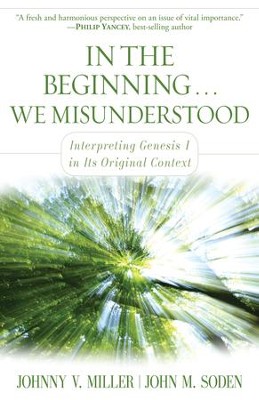The purpose of this book is to show conservative Christians that Ken Ham's and J Sarfarti's views of a young earth and seven literal 24 hour days of creation is not the only goat in the shed. There are a plethora of views available to them, and it doesn't mean rejecting the faith or denying the truth of God's Word.
I soon came to find Young Earth Creationism (YEC) to be confusing and misguided. This was not because of a belief in Modern Science - that would be concords, rather from what the text, itself says.
This can be an uncomfortable issue for many conservative Christians. However, it shouldn't be. It really exposes a hugh flaw in Bible teaching and literacy in Churches today. Unfortunately most conservative Christians believe the lie that they must be YEC or they have rejected God's Word to us. It seems that issues of inspiration, inerrancy, hermeneutics and exegesis are simply either misunderstood by most Church leaders or they are not trained in them. This is true of my local Church - the Pastor has done courses in counselling and ministry - not doctrine or systematic theology. It is no wonder that the Creation mob from Brisbane has such a strong foothold where they really shouldn't.
"Young Earth Creationists are one kind of concordats. They read Genesis 1 through a particular set of scientific lenses that assume it presents the material origins of the Universe, and therefore it is science. They start with the Bible and read science into it." (pg. 36)
Old Earth Creationists, like myself, can also be concordists and conclude that from Modern science that the days of Genesis are not literal - rather figurative. It seems to me that both have a high view of Scripture and that both are dedicated but both are in error as concords is the wrong interpretive tool to use in understanding Genesis.
The preliminary chapters in this book are a fantastic introduction for the lay Christian and the non believer in the state of the discussion at the moment. Chapters 3 & 4 deal with how to understand Genesis and what is it's purpose. They are a simplistic but accurate overview. It is not a Waltke or Walton commentary (both recommended for those interested in further reading) but it is an excellent summary.
For instance, the Toledoth table on page 60 is valuable, for further detail though, Sailhamer's "The meaning of the Pentateuch" is more detailed. Although, from this chart the believer should be able to mount an argument against those who claim that Genesis 1 & 2 are two contradicting creation accounts.
Miller & Soden then go on to analyse the Hebrew Creation account in Genesis with the Mesopotamian, Egyptian and Canaanite creation myths. In alternating chapters we have similarities and the differences of each. Again, reading Walton's "The lost world of Genesis one" or particularly Oswalt's "The Bible and the Myths" one will get more information, but it is a wonderful introduction to the Ancient Near Eastern writings and particularly the Creation Myths.
Understanding an ancient and nuanced text like Genesis 1 & 2 needs understanding of ancient language, customs, worldview, archeology and alike - it is a complex matter. Atheistic scientists who claim that the YEC is the only feasible view and then rip it to shreds are themselves irresponsible with the text. The placing of the text amongst the other ancient narratives is important - although I am not as certain that it is as important as Miller & Soden think.
One of the best sections of this book is the discussion on 'Death before Adam and Eve'( pg 166-171). This deals with a theological question that YEC seem to think is a knock-down argument against more figurative approaches. If animal death before Human kind existed before sin - then sin could not have entered with Adam and therefore cannot be expiated through Jesus. This question is important but easily answered - Miller & Soden do it well. Dembski, in his book the 'End of Christianity' answers it in a way that I find more plausible. But either answer is fine with me.
Any criticisms of the book? I have some quibbles, however, in the light of what it is supposed to do:
"...helping laypeople and students ask the most vital interpretative question that needs to be asked in the study of any portion of Scripture: What did the original author (and Author) mean for the original readers?" pg 190
I think that it is quite a success. Although mostly for lay readers.
4 out of 5 stars

